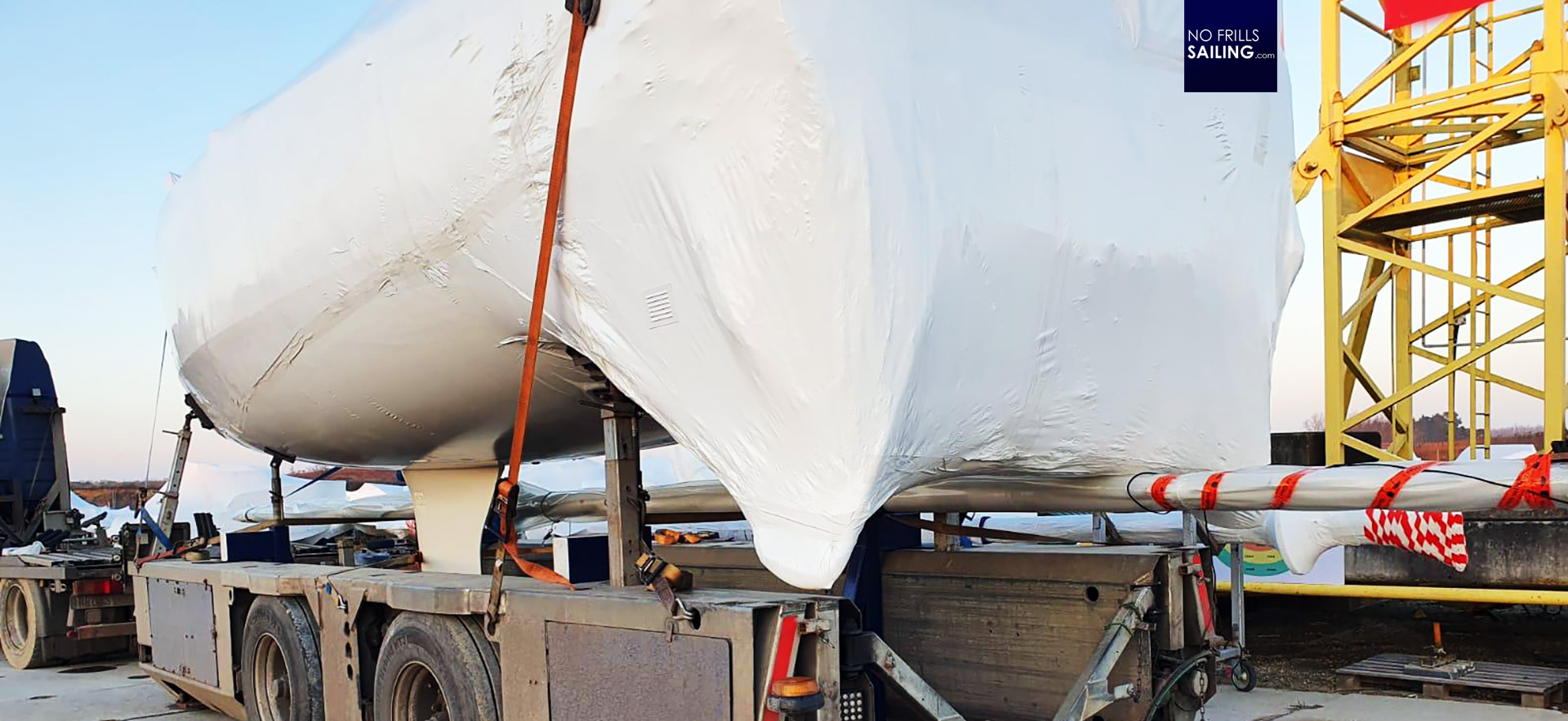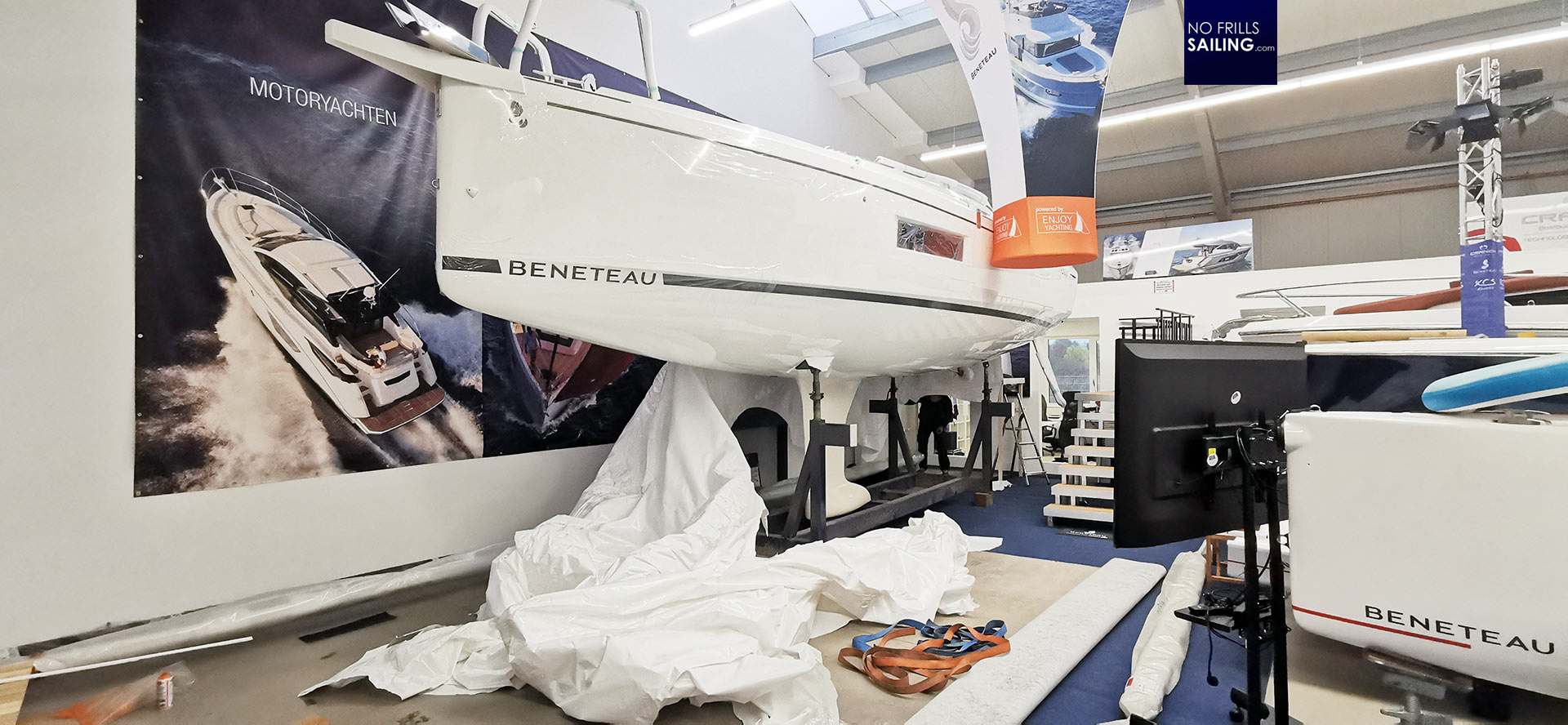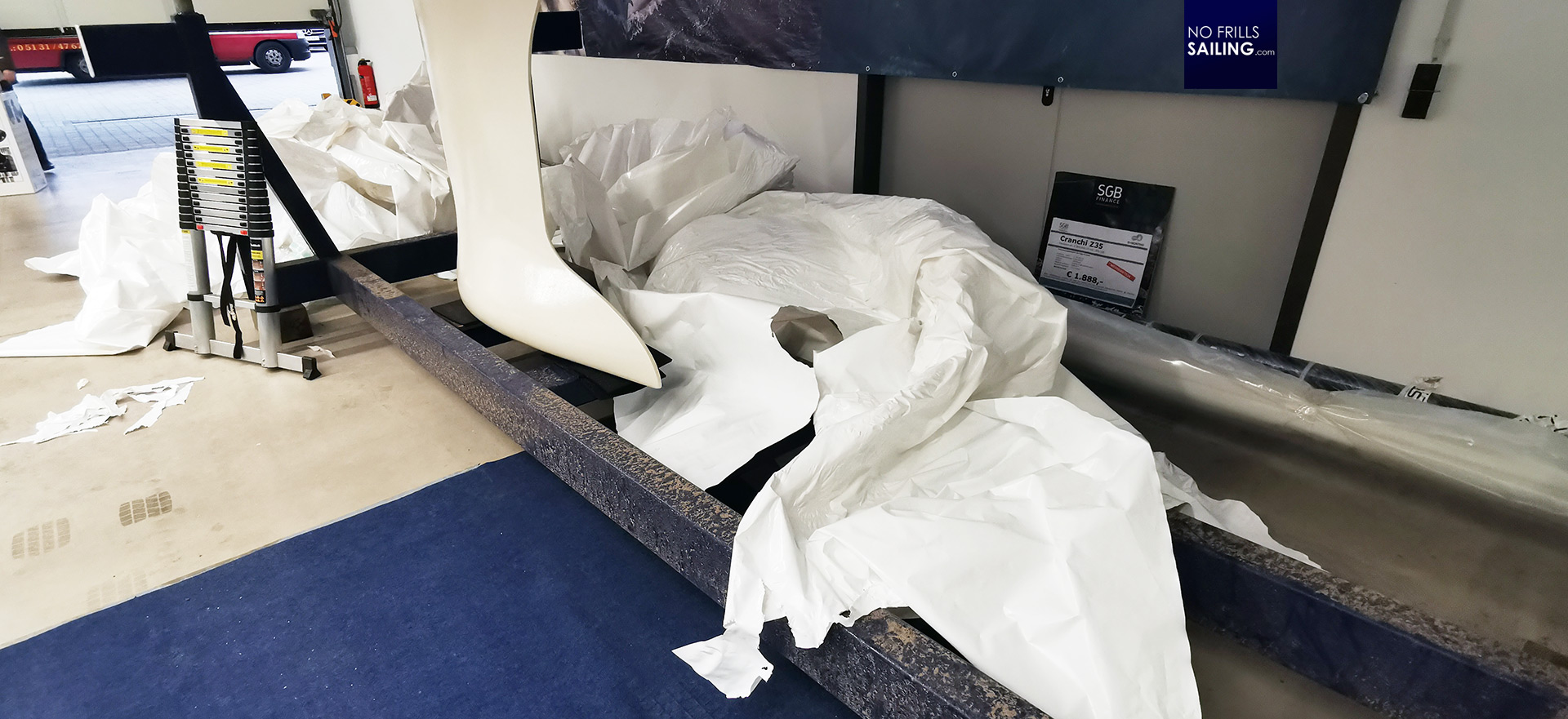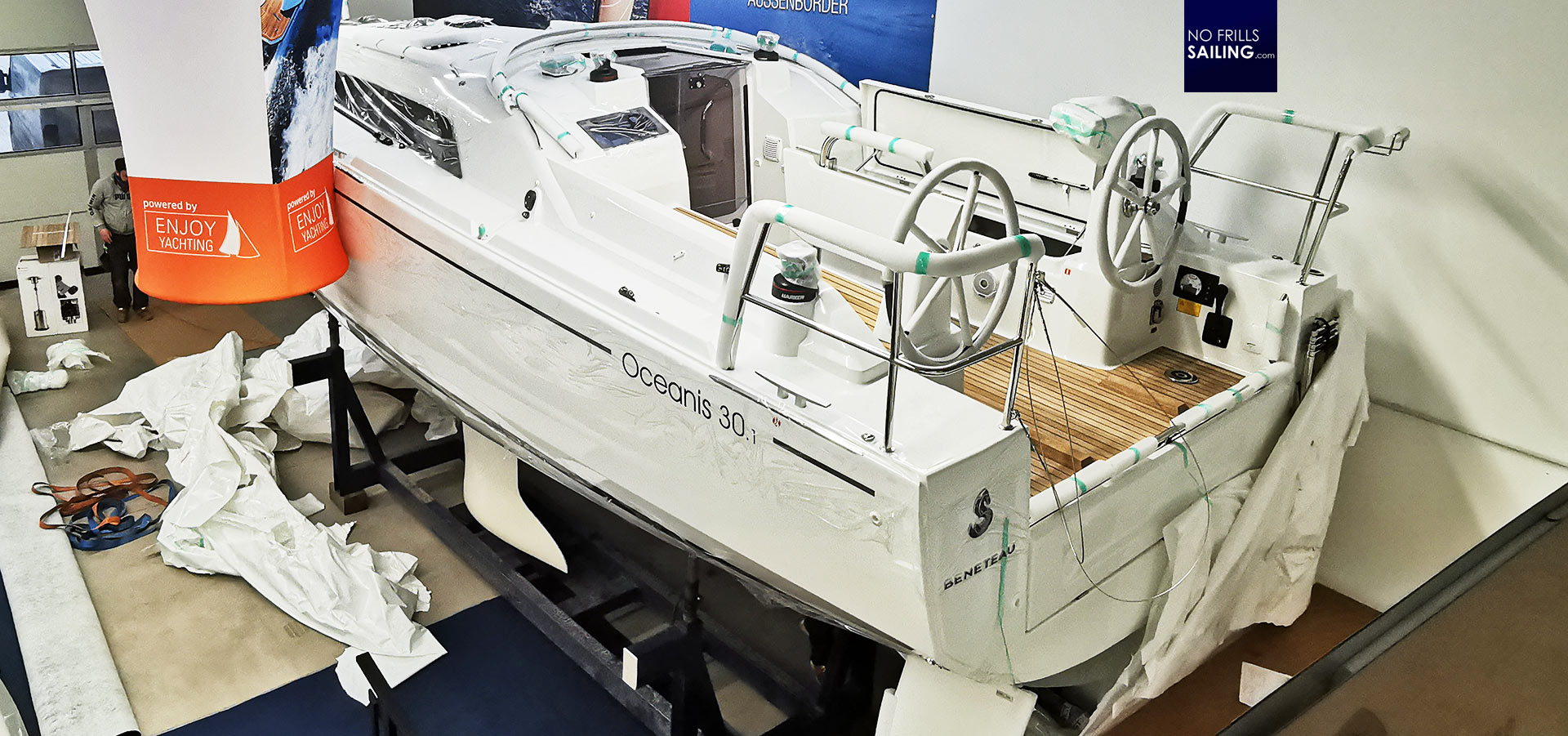With Christmas time approaching, shorter daylight time, the first snow and slippery roads we enter the winter-season at full speed. Sailing isn´t possible in Germany anymore unless you´ve got an adequate boat. For me in my job as a yacht dealer season doesn´t really stop at all. The yard is producing boats 24/7 and so new yachts are arriving. Just like a few days ago when the truck company announced the loading of another Oceanis 30.1 ready to be hauled to our showroom.

The truckers, as usual, sent me pictures of the boat after successful loading: First of all a documentation of proper loading without damage, secondly for me a nice feat to send to the owners-in-being to get them excited. Upon whatsapping the picture, the owner answered like: “That´s a pretty nice wrapped Christmas present”. And right so – but what is all that plastic foil about?
Why is plastic wrapping a plastic boat so important?
Well, there are some good reasons for that conduct. First of all, I know, it is far from soothing an ecologically woke mind to see a boat like this – even up to our flagships with 60 feet and more – wrapped in single-use plastic cover that will be disposed of and ends its short life as garbage. It´s a special heat-sensitive shrink-foil that is put over the boat and shrinked in size for a neat proper fit by burning propane gas and use the hot exhaust gases. Oh boy, not very green … but more than necessary.

First of all the boats may be put on storage for weeks or even months. I´ve seen those lots and these are huge open land lots where the boats are stored until collection. During this time the boat needs to be protected against bad weather, dirt and birds (which really is a big problem for some yards). Secondly, when on transport, the thick plastic cover protects the boat from scratches which may be applied onto the fresh gelcoat surface from passing too closely: Trees, bushes and such could do significant damage to a hull.

Remember that the yard in French Vendeé for example is some 1.500 kilometres away from the Baltic Sea – that´s a long, long trip with hundreds if not thousands of trees and bushes. The bigger the boat, the wider the hull, the bigger the risk of a damage done by hard trees, spiky bushes and such. In this, to protect a boat worth several hundreds of thousands of Euros is a must – as bad as the ecological implication might be. But to be honest, a boat made of GRP, resin and all the crude-oil-based components – even when sailed emission-free by means of wind and sails – isn´t very ecological at all.
Christmas-fun and happy new owners
So, let´s face the truth: Ecological alternatives to GRP in boatbuilding, like flax fiber or even vulcanic fibres aren´t tested thoroughly, aren´t technically mature and won´t be applied in the near future. Even the so-called “e-mobility” will all its concepts ranging from hybrid propulsion to solely electric propulsion, solar power and other trends aren´t really applicable in large scale. Although I consider this the new major trend in boat building – many small and even bigger companies, like Beneteau, are investing heavily in “green boat” projects.

So, back to our new Oceanis 30.1, a boat oof which I have only the best memories. We put the boat into our showroom and began to unwrap her. Making a boat transport-ready with shrinking foil will take literally hours – unwrapping it was a matter of minutes. Disposing of the wrap plastic fills a single trash bin, but that´s how it is and owners must face this. It´s Ying and Yang – there is always a dark side to the light, always night where there is going to be day. Maybe someday somebody will come up with – I don´t know – a corn-based, soluble or degradable wrapping foil? I guess yards would be happy to substitute expensive plastic with a green, clean technology.

Looking forward, I am happy being able to present this fine new little-big boat to their future owners and keep her in our showroom over wintertime as a showcase. Much more I look forward being able to sail the boat in spring 2021 and at last again hoist the sails on one of these agile, nice, lovely boats which are so tiny – yet so huge. Only thing that bothers me really is that delivery of my own new boat is postponed to new year … no Christmas unwrapping for me in the coming days. Ying and Yang, as I said.
You may be interested in these articles as well:
Delivery process of a sailing yacht
Inshore delivery: 200 miles on waterways inland
Handover of my King´s Cruiser 33
